Rocketstevo (talk | contribs) No edit summary |
Rocketstevo (talk | contribs) No edit summary |
||
| Line 5: | Line 5: | ||
[[Image:Caribouquarter.jpg|frame|One of the animated segments, "A Quarter Has a Caribou on It".]] |
[[Image:Caribouquarter.jpg|frame|One of the animated segments, "A Quarter Has a Caribou on It".]] |
||
[[Image:BasilShanly_count10.jpg|frame|[[Muppet & Kid Moment]]: Basil and Shanly count to 10.]] |
[[Image:BasilShanly_count10.jpg|frame|[[Muppet & Kid Moment]]: Basil and Shanly count to 10.]] |
||
| + | [[Image:Kurtbrowning.jpg|thumb|300px|[[Kurt Browning]] and the ''Sesame Park'' cast]] |
||
| + | [[Image:Ericpeterson.jpg|thumb|300px|[[Eric Peterson]] as [[Old King Cole]] with Louis and Basil]] |
||
| + | [[Image:SesameParkLocation.jpg|thumb|300px|Louis inside a house on Sesame Park.]] |
||
'''''Sesame Park''''' is the [[Canadian]] co-production of ''[[Sesame Street]]'', which aired under that name from [[1996]] until 2002. However, the production has a much longer history, dating to initial five minute segments of the US series which aired in 1972 over the [[CBC]] as interstitials. In January 1973, ''Sesame Street Canada'' debuted, an edited version of the one-hour American program, occasionally including specially filmed Canadian cartoon and film inserts. Examples included "A Quarter Has a Caribou on It," a 1982 animated song explaining the value and appearance of the Canadian quarter. By the 1980s the show's title had been modified to ''Canadian Sesame Street''. |
'''''Sesame Park''''' is the [[Canadian]] co-production of ''[[Sesame Street]]'', which aired under that name from [[1996]] until 2002. However, the production has a much longer history, dating to initial five minute segments of the US series which aired in 1972 over the [[CBC]] as interstitials. In January 1973, ''Sesame Street Canada'' debuted, an edited version of the one-hour American program, occasionally including specially filmed Canadian cartoon and film inserts. Examples included "A Quarter Has a Caribou on It," a 1982 animated song explaining the value and appearance of the Canadian quarter. By the 1980s the show's title had been modified to ''Canadian Sesame Street''. |
||
Revision as of 05:57, 24 November 2010
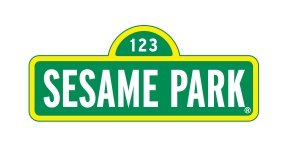
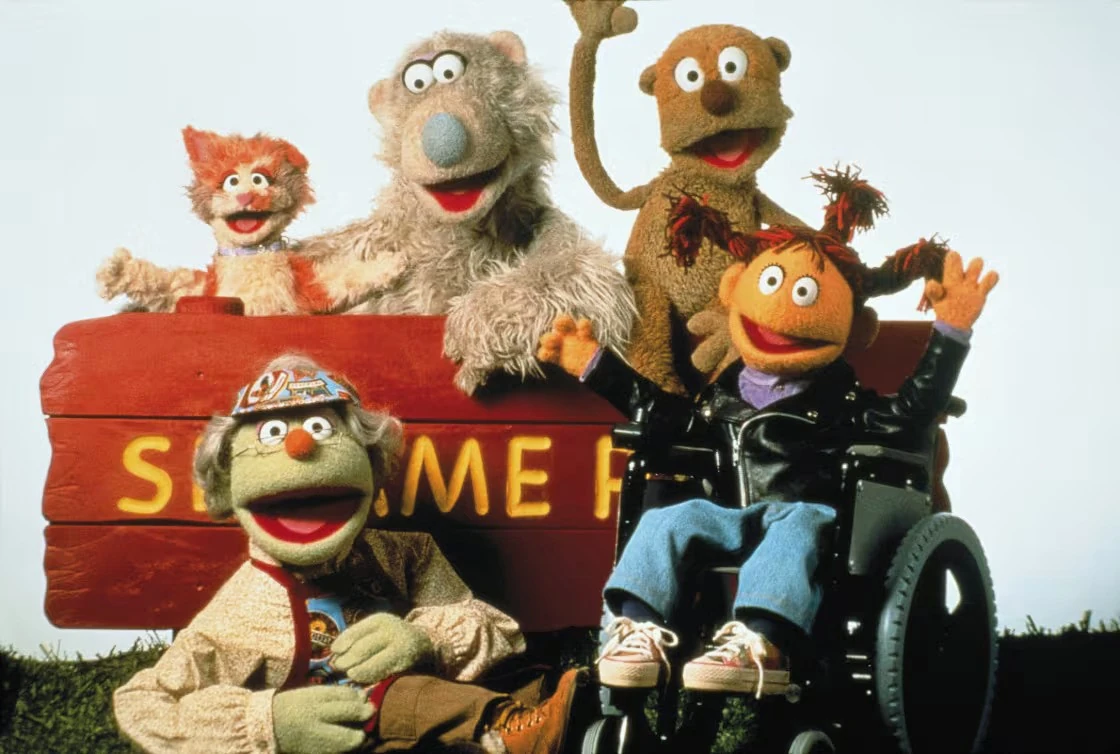
Chaos, Basil, Louis, Katie, and Dodi from Sesame Park
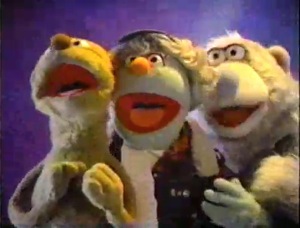
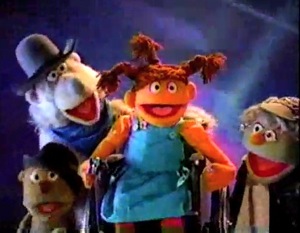
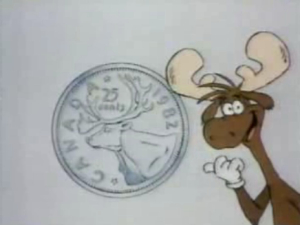
One of the animated segments, "A Quarter Has a Caribou on It".
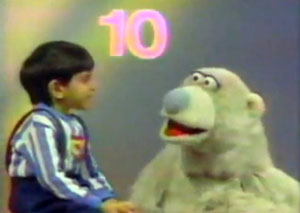
Muppet & Kid Moment: Basil and Shanly count to 10.
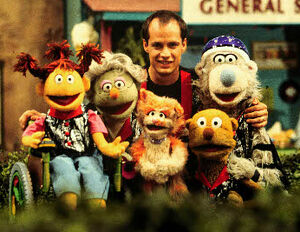
Kurt Browning and the Sesame Park cast
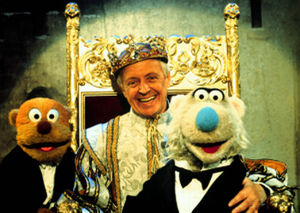
Eric Peterson as Old King Cole with Louis and Basil
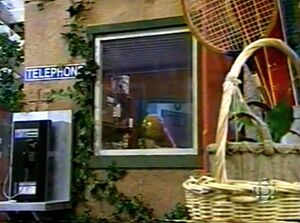
Louis inside a house on Sesame Park.
Sesame Park is the Canadian co-production of Sesame Street, which aired under that name from 1996 until 2002. However, the production has a much longer history, dating to initial five minute segments of the US series which aired in 1972 over the CBC as interstitials. In January 1973, Sesame Street Canada debuted, an edited version of the one-hour American program, occasionally including specially filmed Canadian cartoon and film inserts. Examples included "A Quarter Has a Caribou on It," a 1982 animated song explaining the value and appearance of the Canadian quarter. By the 1980s the show's title had been modified to Canadian Sesame Street.
Including packages of "Sesame Park Snippets", there were 340 episodes produced.
- Season 1: 65 episodes
- Season 2: 67 episodes
- Season 3: 48 episodes
- Season 4: 40 episodes
- Season 5: 40 episodes
Canadian Expansion
In 1987, executive producer Michel Lavoie, who had overseen the film inserts since 1975, initiated an expansion of "Canadian" content. That spring, new segments, filmed in Toronto, debuted, introducing three new Muppet characters: Basil the polar bear, Louis the Francophone otter, and Dodi, an elderly but active bush pilot and mail carrier. The segments aired as inserts between the American "street" storylines and footage, and occasionally involved celebrities, such as Andrea Martin teaching the importance of practice. The puppeteers for these segments included several veterans of Fraggle Rock and Follow That Bird (filmed in Toronto), such as Tim Gosley (Basil), Rob Mills (Dodi and many others), and Gordon Robertson. Bilingual puppeteer and voice actor Pier Paquette was cast as Louis.
At this point, rather than a co-production, the CBC was buying the footage from CTW, and by contract was only allowed to delete 23 minutes of the original American footage. The replaced scenes were often those stressing bilingualism through Spanish. In contrast, in the new footage, French was used heavily, and occasionally the characters, especially Louis, would alternate between the two languages.
In 1988, a host of new characters were added, including Dr. Bouzouki (a parody of David Suzuki who would teach science lessons), Robert, Fern, and most notably, Katie, a girl in a wheelchair who still remains active and cheerful. Katie (puppeteered by Trish Leeper) would continue until the end of the series. Other new segments included Dodi in her plane, flying over Calgary during the outdoor rodeo Stampede, or Toronto while witnessing the Caribbean carnival Caribana.
In 1990, the original trio were joined by Elmo for the Canadian series' first television special, Basil Hears a Noise. By 1993, the cast had expanded to include a number of Parody Muppets based specifically on Canadian personalities, especially CBC reporters and talk show hosts. The roster included reporter Barbara Plum (Barbara Frum), horticulture expert Hana Gardener (interviewer Hana Gartener), sports pundit Garth Burmengi (radio comic Ralph Benmergui), "Rhyme Time" news anchor Peter Londonbridge (Peter Mansbridge, who also guest starred on the series), and storyteller Margaret Redwood (author Margaret Atwood). Just as with the American version, some of the new characters proved short-lived, such as Gordon Brightfoot (a take-off on singer Gordon Lightfoot).
New Name, Locale
In 1996, the show was revamped and renamed Sesame Park, with the new "premiere" airing on October 21. Instead of inserting Canadian elements into the hour-long Sesame Street episodes, the series was trimmed to a half hour, dominated by the Canadian scenes with only occasional American inserts. This setting would be an ecological, lush green public park, as opposed to a city street, with an accessible playground and a Canadian flag proudly waving. The change was explained by CBC children's program executive Peter Moss: "My own kids grew up on the original Sesame Street but we decided it was time to put the pro-social messages of the show and its wonderful pedagogy - the skills of literacy and numeracy - into a Canadian context. There isn't a Canadian city where you can go more than about six blocks without finding a safe, green park. So it became Sesame Park."[1]
The recycled footage reflected the change; Bert and Ernie, and to a lesser extent Big Bird and Grover, among others, continued to appear, but the urban, grungy Oscar the Grouch was deemed more representative of a U.S. streetscape and dropped entirely. Chaos the kitten (played by Karen Valleau) was added to the Canadian Muppet cast, and more Canadian celebrities appeared, often as fairytale or nursery rhyme characters. Most of the original puppeteers were also recast at this time, with Bob Stutt playing Basil and Noreen Young played Dodi. Dodi's General Store was among the new location on the show. At some point, a human cast member was added, Ray (Derek Ritschel), who assisted Dodi.
In July 1998, 25 people from CTW and CBC gathered to review the 200 new Canadian segments produced for the show, to figure out which ones would make the cut. At the time, its 22 minutes per episode of local Canadian material was the record, according to Joan Lufrano, executive producer of the CTW international group.[2] At the time, CBC Montreal was home base for the show, despite its being filmed in Toronto. Nine CBC outlets produced segments, including Vancouver, Winnipeg, Toronto and Halifax,[2] however the 1996 credits listed the show as being "produced in" Winnipeg, Toronto, and Montreal.
Though the new version had a popular following amongst children and received several Gemini Awards and nominations, the ratings were affected by the increased availability of PBS broadcasts via cable, allowing nostalgic parents to revisit the now forbidden Oscar and others on the American series. By 2002, the series had been canceled.
Sesame Street now airs on Treehouse TV, a Canadian channel aimed at preschoolers. Various segments, including Global Grover and Elmo's World, have aired separately on the channel, for many years.
Cast
- Tim Gosley: Basil (1987-1996)
- Trish Leeper: Katie, Barbara Plum
- Rob Mills: Dodi (1987-1996), Garth Burmengi
- Pier Paquette: Louis
- Bob Stutt: Basil (1996-2002)
- Karen Valleau: Chaos
- Noreen Young: Dodi (1996-2002)
Crew
- Executive producer: Shirley Greenfield
- Producers: Lina Danylo, Noah Erenberg, Duncan Lamb, Wendy Smith
- Director: Wayne Moss
- Story editor: Jill Golick
- Writers: Kate Barris, Jean Charlebois, Denise Dickin, Tracey Forbes, Jill Golick, Christel Kleitsch, John Dazarus, Cathy Moss, Briane Nasimok, Michael O'Hara, Edith Rey, Ian Ritchie, Bruce Robb, Bob Stutt, Mary Vingoe, Robin White
- Original music: Robert Charlebois, Jim Corcoran, Luc Gilbert, Great Big Music, Bill Iveniuk, Dave Jandrisch, Robert Lafond, Bruce Ley, Linda Morrison, Bill Skolnik
- Educational consultants: Alison D'Anglejan, Ph.D., Margie Golick, Ph.D.
- Executive in charge of production: Doug Barnes
- Creative head of children's programming: Peter Moss
Trivia
- Some inserts were dubbed into Spanish, and aired on Plaza Sésamo. (Examples include Episodio 899 and Episodio 900.)
Sources
- Greer, Sandy. "Cuddly New Canadians." Toronto Star, March 7, 1987.
- Truglio, Rosemarie T. G is for Growing. Lawrence Erlbaum: New Jersey, 2000.
- "Meet Canada's Own Muppets." Toronto Star, October 16, 1986.
